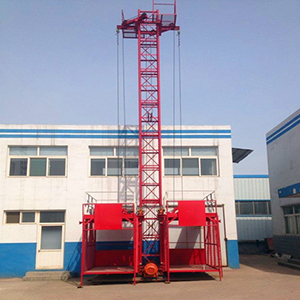When choosing the appropriate material lifting machine for use in construction projects, various aspects must be seriously considered, as they directly affect the project’s effectiveness and safety. Before making any equipment decisions, contractors have to consider the scope of their work, the height of the building, weight capacity requirements, and the accessibility of the site. The sophistication of contemporary construction projects requires lifting solutions that can lift a variety of materials and be reliable during the long durations of the projects.
The first step should be an evaluation of the nature of materials that have to be lifted, whether it is ordinary construction materials or special equipment. By knowing these requirements at the early stages of the planning process, contractors can determine what to install early enough, thereby preventing the high cost of changing equipment mid-project and ensuring a smooth workflow.
Types of Material Lifting Machines
There are different lifting solutions that are used in construction sites, and each solution is suited or specific to its application and environment. Scissor lifts are stable platforms for both staff and supplies, which makes them suitable for use in the interior and in cases where precise placement is needed. These machines are good in a controlled environment where elevation is required most of the time.
The boom lifts can extend the reach and, thus, enable the contractors to reach difficult places and work at safe distances with obstacles. They have the articulating arms that give them the flexibility to be positioned, thus making them useful in complex architecture projects.
Another type of material lifting machine for construction is the material hoist, which specifically lifts heavy material vertically. Such systems come in handy when it comes to high-rise construction projects, when conventional lifting techniques are ineffective or dangerous.
Maintenance and Service Considerations
The success of operations is greatly determined by the ability to develop a strong maintenance protocol and service relationships in the long term. Maintenance schedules ensure that the unexpected breakdowns do not occur, which can stop the progress in construction and add costs to the project. Equipment suppliers that provide full lift repair services should be of utmost importance to the contractors since this will guarantee a fast response when problems occur.
Maintenance teams are professionals and are aware of the rigorous conditions in the construction environment and can detect any possible issues before they turn into expensive failures. Building a network of certified technicians who work with construction lifting equipment will make sure that any repairs needed are done to the specifications of the manufacturer.
Conclusion
The decision concerning equipment selection ought to consider both short-term and long-term costs. Although buying decisions usually center on the initial costs, the contractors enjoy the advantage of looking at the total cost of ownership of a piece of equipment, such as maintenance and fuel costs, and possible downtime costs.
Special applications, like home elevator repair jobs, may demand other equipment considerations than typical construction lifting, as some contractors discover. Such special applications can be one of the reasons to invest in special lifting solutions that would be more precise and safer in residential settings.


